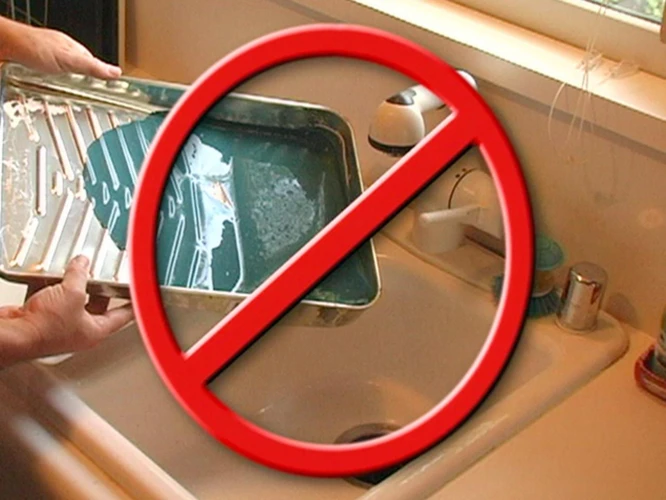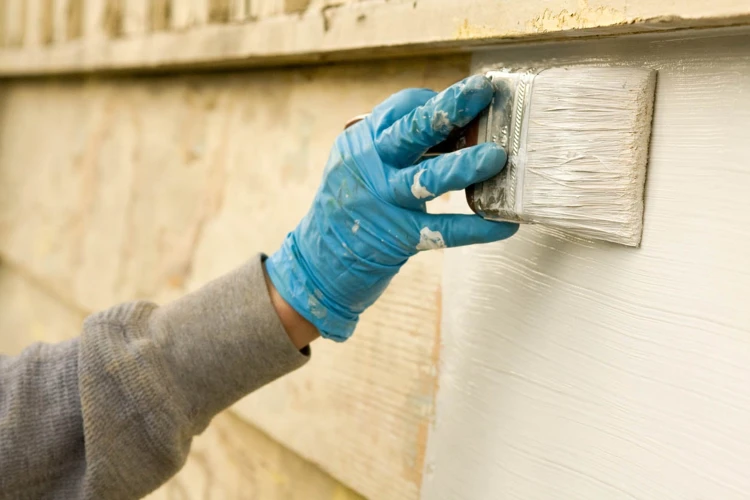There’s something daunting about embarking on a new painting project. Beyond selecting the right color, there is the more significant issue of paint type. The decision to choose latex or oil-based paint can be confounding for many homeowners. Both have advantages and disadvantages, and picking the wrong paint type can result in a costly and time-consuming re-do. In this comprehensive article, we’ll examine the characteristics of both paints so that you can make an informed decision about which type of paint is best for your upcoming project.
The Basics: Latex and Oil-Based Paint
Latex and oil-based paint are two popular paint types for homeowners and professional painters. Knowing the differences between them is essential when choosing paint for your next project. Latex paint is a water-based paint, while oil-based paint is made of solvents and oils. Let’s take a closer look at each paint type to help you determine which one to use for your next painting project. If you’re interested in learning more about latex paint, click here for an in-depth article.
What is Latex Paint?
Latex paint, also known as water-based paint, is a type of paint which has a water-soluble base. It is different from oil-based paint because it uses latex resin as the binder instead of oil. This type of paint has become increasingly popular in recent years due to its ease of use and quick drying time compared to oil-based paint.
Latex paint is a versatile option for various surfaces, including:
- Interior and exterior walls
- Ceilings
- Doors
- Trim
- Furniture
This type of paint is also available with different sheen levels, ranging from flat to high gloss. Depending on the project and desired look, different sheen levels can be used for optimal results. Latex paint is also available in a wide range of colors and can be easily mixed to achieve custom shades.
Since latex paint is water-based, it has several advantages over oil-based paint:
- Easy clean-up with just soap and water
- Low odor and low toxicity compared to oil-based paints
- Quick drying time, allowing for multiple coats in one day
- Does not yellow over time as oil-based paints can
- Much less likely to crack or peel over time
However, there are also some drawbacks to using latex paint:
- May require more coats compared to oil-based paint, especially for darker colors
- May not adhere well to oil-based paint or certain surfaces, such as metal or glossy surfaces
- May not provide the same level of durability and hardness that oil-based paint can
Latex paint is a great option for painting projects due to its versatility, ease of use, and low odor. However, it may not be the best option for every project, and it is important to understand the advantages and disadvantages before making a decision.
If you want to learn more about the advantages of latex paint, click here. If you need some tips on applying latex paint to walls, click here. To learn more about different sheen options for latex paint, click here. If you are interested to know how to store latex paint properly, click here. For tips on cleaning latex paint brushes and rollers, click here. Lastly, to know more about common mistakes to avoid when using latex paint, click here.
What is Oil-Based Paint?
Oil-based paint is a type of paint that has been commonly used for many years. This paint is known for its durability, and it is excellent for use on surfaces that require a tough finish. Here are some key characteristics of oil-based paint:
- Solvent-based: Oil-based paint is made with a solvent base rather than water. This means that it takes longer to dry than latex paint, as the solvent must evaporate in order for the paint to dry.
- Strong odor: Oil-based paint has a strong odor due to the solvents used in the formula. This odor can linger for days or even weeks after the paint has been applied.
- Durable: Oil-based paint is highly durable and can stand up to wear and tear. It is also highly resistant to water, making it a good choice for use in kitchens and bathrooms.
- Hard finish: When oil-based paint dries, it creates a hard, glossy finish that is highly resistant to chipping and peeling.
- Requires mineral spirits for clean-up: Oil-based paint cannot be cleaned up with water – instead, it requires mineral spirits or another solvent for clean-up. This makes it more difficult and time-consuming to use than latex paint.
- Long-lasting: Because of its durability, oil-based paint typically lasts longer than latex paint. However, this can also be a disadvantage if you want to change the color of the paint, as it can be difficult to paint over oil-based paint with another type of paint.
Oil-based paint is a good choice for surfaces that require a tough, durable finish. However, its strong odor and longer drying time make it less convenient to use than latex paint. Additionally, its use of solvents and need for mineral spirits for clean-up make it less environmentally friendly than latex paint.
Advantages and Disadvantages of Latex Paint
Now that we understand the basics of both latex and oil-based paint, let’s take a closer look at the advantages and disadvantages of latex paint. Latex paint is a popular choice among homeowners and professionals alike because of its numerous advantages, but it also has some drawbacks that should be considered. Understanding the pros and cons of latex paint will help you determine if it’s the right choice for your next painting project.
Advantages of Latex Paint
Latex paint is a popular choice for many individuals, especially for those who are environmentally conscious. Here are some advantages of using latex paint:
| Dries Faster: | Latex paint dries faster than oil-based paints. It can dry to the touch within an hour and can be re-coated in four hours, making it a more time-efficient option. |
| Easy to Clean: | Latex paint can be easily cleaned with soap and water, making it a convenient option for households with children or pets. |
| Low VOC Levels: | Latex paints have low volatile organic compound (VOC) levels, making them a safer and healthier option for individuals with respiratory issues or chemical sensitivities. |
| Durable: | Latex paint is durable and resistant to cracking, peeling, and fading over time. This makes it a good option for painting high-traffic areas like hallways, living rooms, and kitchens. |
| Wide Range of Colors: | Latex paint is available in a wide range of colors, so you can find the perfect shade for your project. |
| Cost-Effective: | Latex paint is typically less expensive than oil-based paints, making it a more budget-friendly option for painters. |
These advantages make latex paint an attractive option for many DIYers and professionals alike.
Disadvantages of Latex Paint
When considering using latex paint for a project, it is important to be aware of its potential disadvantages. Here are a few to keep in mind:
- Lack of Durability: One of the biggest disadvantages of latex paint is that it is not as durable as oil-based paint. While it may resist fading and chalking, it can easily crack or peel, especially on surfaces exposed to extreme weather conditions or heavy wear and tear.
- Less Adhesion: Latex paint also has less adhesion than oil-based paint. This can make it difficult to use on surfaces such as metal or previously painted oil-based surfaces. Proper surface preparation and priming can help improve adhesion, but it is important to keep this disadvantage in mind.
- Longer Drying Time: Latex paint takes longer to dry than oil-based paint. This can be frustrating for those who need to complete a project quickly or who are working on a surface exposed to dust or other environmental factors. Additionally, if a second coat of paint is needed, it cannot be applied until the first coat is completely dry, which can prolong the overall painting process.
- Prone to Water Damage: Although latex paint is water-resistant, it is still prone to water damage in areas with high humidity or moisture. This can cause the paint to peel, blister or bubble, and it may require frequent touch-ups or a complete repaint in areas such as bathrooms or kitchens.
These disadvantages are important to consider when deciding whether to use latex paint for a project. It is also worth noting that there are certain situations where oil-based paint may be a better option, such as when painting high-use areas or outdoor surfaces exposed to the elements. Always weigh the pros and cons before starting any painting project.
Advantages and Disadvantages of Oil-Based Paint
When it comes to choosing the right paint for your project, it is important to consider all the options available. While we have already discussed the advantages and disadvantages of latex paint, it’s also crucial to weigh the pros and cons of oil-based paint. Oil-based paint is known for its durability and smooth finish, but it may not always be the best choice for every project. In this section, we will explore the advantages and disadvantages of using oil-based paint, allowing you to make an informed decision for your upcoming painting project.
Advantages of Oil-Based Paint
Oil-based paint offers several benefits that make it a popular choice for certain painting projects. Here are some of the advantages of using oil-based paint:
- Durability: Oil-based paint is known for its excellent durability, making it ideal for surfaces that undergo a lot of wear and tear, such as doors, trim, and furniture. It forms a hard, protective coating that can withstand moisture, heat, and even chemicals, which means it will last much longer than latex paint in high-traffic areas.
- Smooth Finish: Because oil-based paint takes longer to dry than latex paint, it has more time to settle into a smooth, even surface. This makes it an excellent choice for projects that require a high-quality, professional-looking finish, such as cabinets or furniture.
- Stain Resistance: Oil-based paint is highly resistant to staining, making it an excellent choice for areas that are prone to spills or other accidents. It is also easy to clean, which means you can wipe away spills and stains without damaging the paint.
- Adhesion: Oil-based paint adheres to surfaces very well, which means it can be used on a wide variety of materials, including metal, wood, and masonry. This makes it versatile and ideal for a range of painting projects.
- UV Resistance: Oil-based paint has excellent UV resistance, which means it won’t fade or discolor as quickly as latex paint when exposed to sunlight. This makes it an excellent choice for outdoor painting projects, such as fences or decks.
Oil-based paint is a great option for projects that require durability, a smooth finish, stain resistance, strong adhesion, and UV resistance. However, it also has some disadvantages that should be considered before choosing this type of paint.
Disadvantages of Oil-Based Paint
Oil-based paints have been a popular choice for many years, but that doesn’t mean they don’t have their disadvantages. Here are some of the drawbacks to using oil-based paints in your next project:
| Disadvantages | Explanation |
|---|---|
| Strong Odor | Oil-based paints have a strong chemical odor that can persist for days or even weeks after painting. This can be unpleasant for those living or working in the room being painted. |
| Longer Drying Time | Oil-based paints take much longer to dry than latex paints, sometimes up to 24 hours or more. This can make it difficult to complete a project quickly or touch up areas that need additional work. |
| More Difficult to Clean Up | Cleaning up after using oil-based paints requires the use of solvents such as mineral spirits or turpentine. These solvents can be messy and difficult to work with, and require careful disposal to avoid environmental damage. |
| Can Yellow Over Time | Oil-based paints are prone to yellowing over time, which can be especially noticeable on light-colored surfaces. This can be caused by exposure to sunlight or high humidity, and may require frequent repainting to maintain a clean appearance. |
| Higher VOC Content | Oil-based paints contain higher levels of volatile organic compounds (VOCs) than latex paints. These compounds can be harmful to human health and the environment, and may require special ventilation or protective gear when using. |
While oil-based paints may have some disadvantages, they are still a popular choice for many painting projects due to their durability and ability to create a smooth, glossy finish. However, it’s important to weigh the pros and cons before deciding which type of paint to use in your next project.
Which One is Better for Your Next Painting Project?
When deciding which type of paint to choose for your next project, there are a few things to consider. The first factor to keep in mind is the surface you will be painting on. Latex paint is ideal for previously painted surfaces, as well as for surfaces that are prone to expanding or contracting due to temperature changes. Oil-based paint, on the other hand, is better suited for surfaces that are frequently touched or exposed to moisture.
Another important factor to consider is the overall durability you desire. If you are looking for a long-lasting finish, then oil-based paint is the better option. It is more resistant to wear and tear, as well as to chipping and peeling. However, if you are more concerned with ease of application and fast drying times, then latex paint is the way to go. It can be applied with minimal preparation, dries quickly, and is easy to clean up with soap and water.
Cost is also a consideration, as there can be a significant difference in price between latex and oil-based paints. Latex paint is generally less expensive than oil-based paint, especially if you consider the additional cost of purchasing solvents, mineral spirits, or other tools required for oil-based paint. Additionally, latex paint tends to require fewer coats, which can further reduce overall costs.
Ultimately, the decision between latex and oil-based paint for your next project comes down to your specific needs and priorities. Both types of paint have their advantages and disadvantages, so it is important to carefully evaluate your project requirements before making your final decision. By doing so, you can ensure that you choose the option that will provide the best overall value and performance for your specific situation.
Conclusion
After weighing the advantages and disadvantages, it ultimately comes down to personal preference and the specific needs of your painting project when choosing between latex paint and oil-based paint.
Latex paint is a popular choice due to its quick drying time, easy clean up with soap and water, and low odor. However, it may not adhere well to certain surfaces or provide the same level of durability as oil-based paint.
Oil-based paint is known for its durability, resistance to wear and tear, and ability to adhere well to almost any surface. However, it has a longer drying time, harsh odor, and requires solvents for clean up.
Consider the type of surface you will be painting, the conditions the paint will be exposed to, and your personal preferences when deciding which type of paint to use. It may even be beneficial to use a combination of both, such as using oil-based paint for the primer coat and finishing with latex paint.
In the end, it is crucial to properly prepare the surface and use quality paint products to ensure a long-lasting and satisfactory finished product. So, it is always advisable to choose the best paint for your project after considering all the factors that can impact the durability and appearance of the paint.
Frequently Asked Questions
Can I use latex paint over oil-based paint?
Yes, but the surface must be properly prepared with sanding and priming before applying the latex paint.
Which type of paint is better for exterior surfaces?
Latex paint is generally preferred for exterior surfaces due to its durability and ability to withstand weather conditions.
Can oil-based paint be used on walls?
Yes, oil-based paint can be used on walls, but it has a strong odor and takes longer to dry compared to latex paint.
Is one type of paint more eco-friendly than the other?
Latex paint is generally considered more eco-friendly due to being water-based and having fewer harmful chemicals compared to oil-based paint.
Which type of paint is easier to clean up?
Latex paint is easier to clean up with soap and water, while oil-based paint requires solvents such as mineral spirits or turpentine.
Can I use latex paint for furniture?
Yes, latex paint can be used for furniture, but it may not provide as durable of a finish as oil-based paint.
Does one type of paint have a longer lifespan than the other?
Oil-based paint typically has a longer lifespan than latex paint, but it may yellow over time.
Is oil-based paint more resistant to stains compared to latex paint?
Yes, oil-based paint is generally more resistant to stains compared to latex paint due to its hard and glossy finish.
What type of paint is better for kitchen and bathroom walls?
Latex paint is generally preferred for kitchen and bathroom walls due to its resistance to moisture and mildew.
Can I use either type of paint on metal surfaces?
Yes, both latex and oil-based paint can be used on metal surfaces, but metal surfaces must be properly prepared with sanding and priming before applying the paint.


